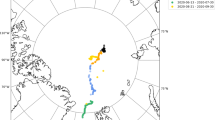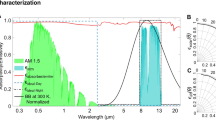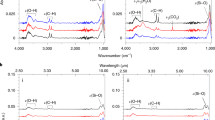Abstract
IT has often been observed that snowstorms are accompanied by pronounced electrical effects; blown snowflakes and the air in their vicinity become highly charged. No explanation has been offered for the mechanism involved in snowstorm electrification, but analysis1 shows that, despite the erratic and often contradictory results, it is possible to discern a pattern in the electrification which is explicable qualitatively in terms of the theory of charge transfer associated with temperature gradients in ice2. According to the theory, which was verified experimentally, charge is separated when temperature gradients are applied along ice specimens, or when two pieces of ice of different temperature are momentarily brought into contact; the colder ice acquires positive charge and the warmer ice negative charge.
This is a preview of subscription content, access via your institution
Access options
Subscribe to this journal
Receive 51 print issues and online access
$199.00 per year
only $3.90 per issue
Buy this article
- Purchase on Springer Link
- Instant access to full article PDF
Prices may be subject to local taxes which are calculated during checkout
Similar content being viewed by others
References
Latham, J., Quart. J. Roy. Met. Soc., 90 (1964).
Latham, J., and Mason, B. J., Proc. Roy, Soc., A, 260, 523 (1961).
Reynolds, S. E., Brook, M., and Gourley, M. F., J. Met., 14, 426 (1957).
Latham, J., Brit. J. App. Phys., 14, 488 (1963).
Author information
Authors and Affiliations
Rights and permissions
About this article
Cite this article
LATHAM, J., STOW, C. Electrification of Snowstorms. Nature 202, 284–285 (1964). https://doi.org/10.1038/202284a0
Issue Date:
DOI: https://doi.org/10.1038/202284a0
This article is cited by
Comments
By submitting a comment you agree to abide by our Terms and Community Guidelines. If you find something abusive or that does not comply with our terms or guidelines please flag it as inappropriate.



